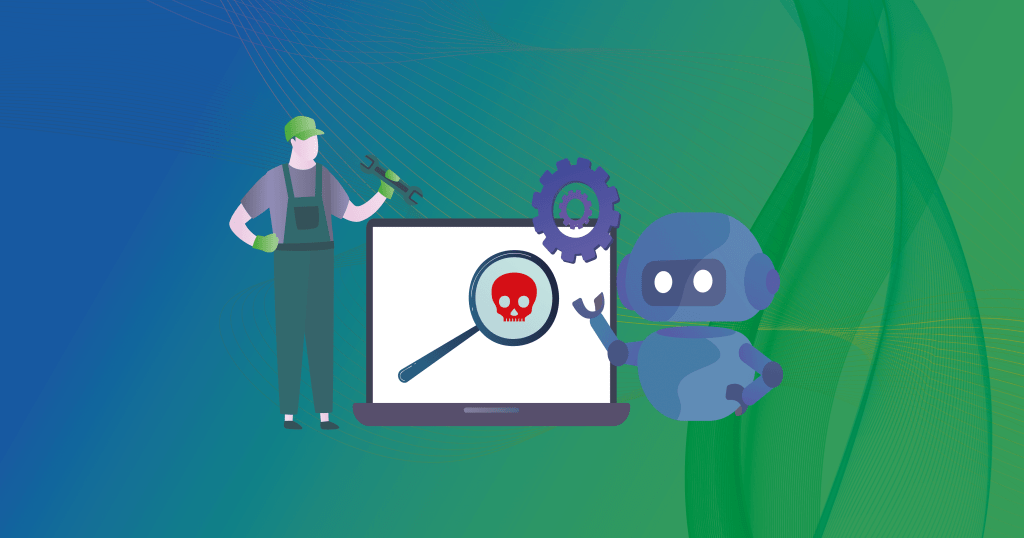As he handed over the keys to his network, Rob recalled how it all began for him 30 years ago. Walking back on memory lane, he realized how much his job as a security admin had changed.
The tools he worked with, the technologies he used, and the network he worked on had changed. And a big part of his job, vulnerability management solution, had changed and evolved too. 30 years ago, network vulnerability management was just an idea. But now, it was indispensable and vulnerability management tools have evolved. So what all changed?
Network Vulnerability Management Through the Years
From the 90s to the 2000s:
Back then, Rob was fresh out of college as an IT help, and so were computers, routers, and other network devices. Machines were simpler, and as a consequence, the vulnerabilities were lesser as well. There weren’t any vulnerability databases at all!!
It wasn’t until 1999 that MITRE published the CVE database. And it only had around 1000 vulnerabilities. Further, the scans were manual, and Rob fondly remembered scanning through printed reports for errors and sending them to his supervisor for remediation. Then doing it all over again after remediation to ensure the vulnerability was remediated. How times have changed! He wondered.
Network vulnerability management was just a theoretical concept back then. An efficient way of fixing vulnerabilities, it was a work in progress and still on paper.
From the 00s to the 10s
The 2000s were times of drastic changes. Rob had climbed the career ladder and remembered working with new technologies every other year. Newer software and hardware meant more vulnerabilities, and the facts reinforced what he had experienced.
From an average of just 90 vulnerabilities a month in the 90s, the number of vulnerabilities went up to 400s a month. It was a steep rise, and managing vulnerabilities manually was getting difficult, along with all of his other duties as an IT security manager.
Talks about a systematic way of handling vulnerabilities were getting popular, and it was aptly and understandably called network vulnerability management. A cyclic way of scanning, assessing, prioritizing, and remediating vulnerabilities.
Cyberattacks were on the rise. But, making his life easier were the vulnerability scanners, which were evolving too. More comprehensive databases, faster detection, and response helped Rob overcome some tough crises.
Rob remembered the painful and sleepless nights of remediating a zero-day vulnerability with his team and chuckled in reminiscence.
2010-present:
The 2010s were more of the same. Rob’s title went from a sysadmin to a CISO, and he went from making reports to reading them. Cybersecurity was maturing as an industry, and people started to realize its importance. The network vulnerability management space had matured too, and the products he was using were becoming smarter.
Assessment and remediation were still separate processes, and the friction between IT and security teams had grown through the years, with one team dumping tasks over the other.
Till 2016, the number of vulnerabilities a year was in the thousands. But the year 2017 was a shock for Rob and everyone in the industry. With the rise in the number of software and apps, there was a sudden outburst of vulnerabilities, and over 8000 vulnerabilities were discovered.
Cyberattacks like WannaCry and Petya shook the world, affecting millions of people and billions of dollars. The impact of cyberattacks was meteoric, and the significance of cybersecurity came to the forefront.
And with those sudden, drastic changes, network vulnerability management evolved to meet the rising challenge. And a new chapter began.
The New Chapter of Network Vulnerability Management
Rob was in the twilight of his career, but vulnerability management had just begun its new chapter. Integration and unification are the next big things, and unlike Rob, his successors were lucky. Additionally, by harnessing the power of automation, network vulnerability management became more continuous and complete, and Rob’s life became a little easier too.
Tools like SanerNow could perform scanning, assessment, prioritization, and remediation. Furthermore, it could do it all automatically and spit out insightful reports too. Rob wished he had a tool like this a few years back to help him if he was in a pickle.
But he knew his network was in good hands, and he could rest easy.

